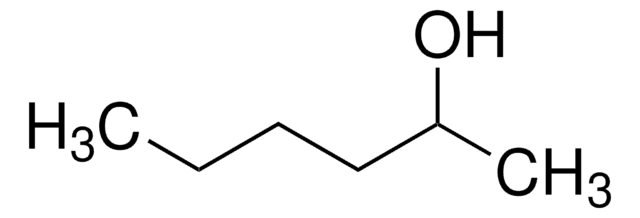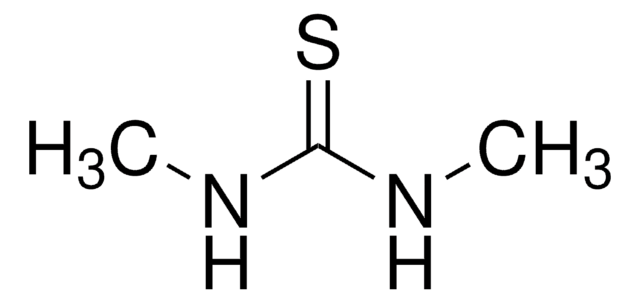H13303
1-Hexanol
reagent grade, 98%
Synonyme(s) :
Hexyl alcohol
About This Item
Produits recommandés
Qualité
reagent grade
Niveau de qualité
Densité de vapeur
4.5 (vs air)
Pression de vapeur
1 mmHg ( 25.6 °C)
Pureté
98%
Forme
liquid
Température d'inflammation spontanée
559 °F
Limite d'explosivité
0.34-6.3 %
Indice de réfraction
n20/D 1.418 (lit.)
Point d'ébullition
156-157 °C (lit.)
Pf
−52 °C (lit.)
Densité
0.814 g/mL at 25 °C (lit.)
Chaîne SMILES
CCCCCCO
InChI
1S/C6H14O/c1-2-3-4-5-6-7/h7H,2-6H2,1H3
Clé InChI
ZSIAUFGUXNUGDI-UHFFFAOYSA-N
Vous recherchez des produits similaires ? Visite Guide de comparaison des produits
Catégories apparentées
Description générale
Application
- As an oil phase in the preparation of manganese zinc ferrite nanoparticles by precipitation in reverse microemulsion system.
- As a solvent in the separation of carboxylic acids and tetrahydrofurfuryl alcohol from water.
- As a solvent in the synthesis of ZnO (zinc oxide) quantum particles from zinc acetate by precipitation method.
Caractéristiques et avantages
Mention d'avertissement
Warning
Mentions de danger
Conseils de prudence
Classification des risques
Acute Tox. 4 Dermal - Acute Tox. 4 Oral - Eye Irrit. 2 - Flam. Liq. 3
Code de la classe de stockage
3 - Flammable liquids
Classe de danger pour l'eau (WGK)
WGK 1
Point d'éclair (°F)
140.0 °F - closed cup
Point d'éclair (°C)
60 °C - closed cup
Certificats d'analyse (COA)
Recherchez un Certificats d'analyse (COA) en saisissant le numéro de lot du produit. Les numéros de lot figurent sur l'étiquette du produit après les mots "Lot" ou "Batch".
Déjà en possession de ce produit ?
Retrouvez la documentation relative aux produits que vous avez récemment achetés dans la Bibliothèque de documents.
Les clients ont également consulté
Notre équipe de scientifiques dispose d'une expérience dans tous les secteurs de la recherche, notamment en sciences de la vie, science des matériaux, synthèse chimique, chromatographie, analyse et dans de nombreux autres domaines..
Contacter notre Service technique









